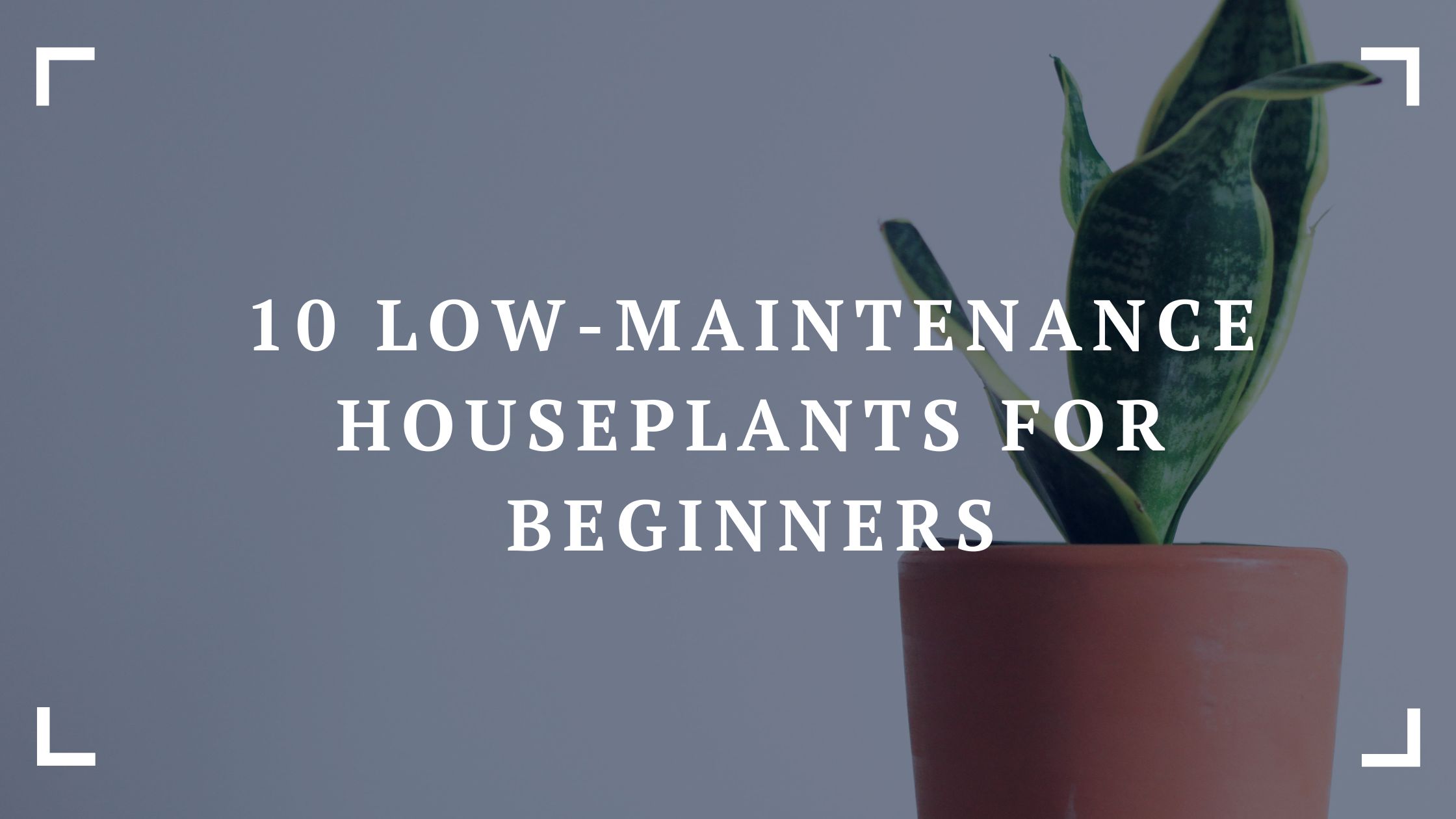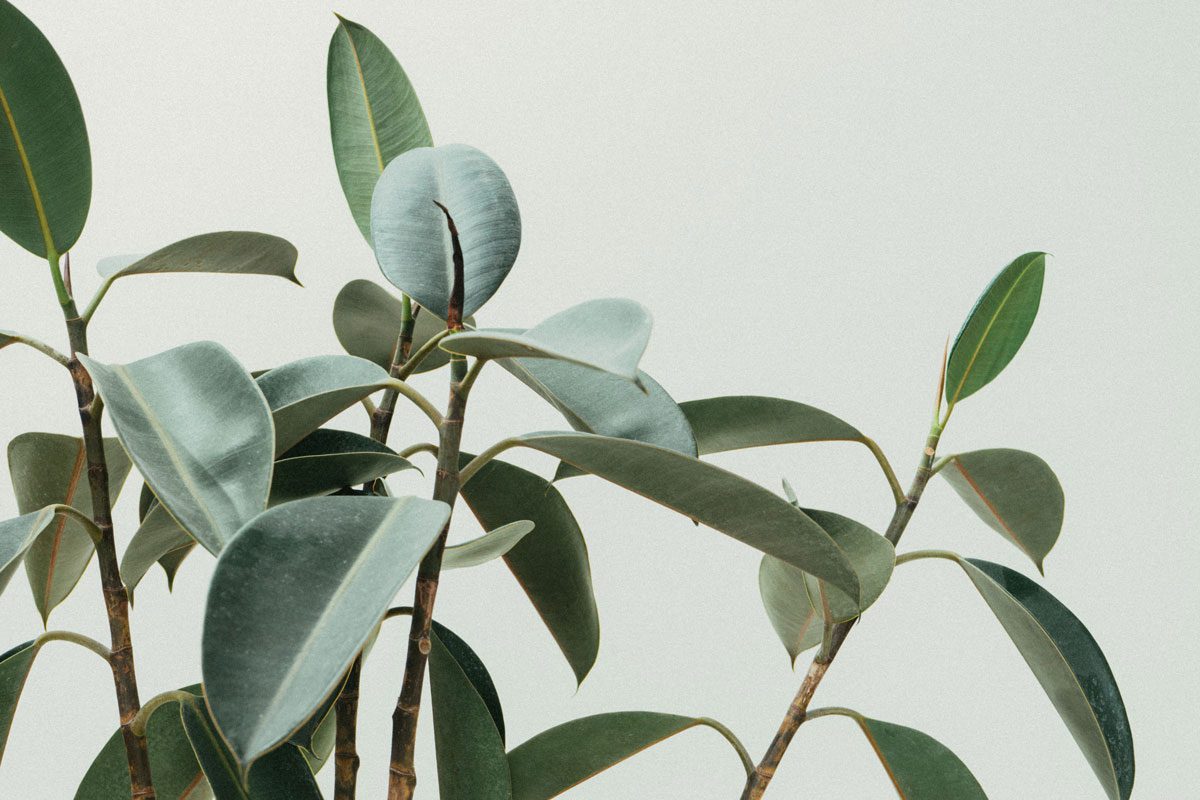Do you want to add a bit of life and character to your living space? Well, look no further than houseplants! They add a fresh touch of green to any room. Plus, they have health benefits. They can improve air quality and decrease stress levels. And the best part? They won’t break the bank!
Choosing houseplants, however, can be overwhelming. To make it easier, we compiled a list of 10 low-maintenance beginner-friendly houseplants that can elevate aesthetics and make a cozy space. These plants require minimal care and attention, increasing the chances that they’ll survive despite not having an experience and expertise in indoor gardening.
Snake Plant

The snake plant (Sansevieria), is perfect for beginners. The plant’s upright and sturdy leaves are in shades of green and yellow.
It can tolerate low light and infrequent watering, and it has air-purifying properties that remove toxins from the air. Simply place it in a well-draining pot with soil that drains easily, water it sparingly, and place it in indirect or low light.
Peace Lily
A beautiful and low-maintenance house plant, peace lily, (Spathiphyllum) has dark green leaves that provide a stunning backdrop for its delicate white flowers.
To care for your Peace Lily, simply place it in a well-draining pot with soil that retains moisture. Water it once a week and place it in bright, indirect light.
Lipstick Plant
The glossy, dark green leaves of the lipstick plant (Aeschynanthus) grow in a vine-like pattern, and its striking, tube-shaped flowers are a vibrant red color, resembling a tube of lipstick.
This easy-to-grow indoor plant is suitable for beginners. It’s easy to care for and can adapt to a variety of indoor environments. The plant can tolerate low light conditions. Exposure to direct sunlight might cause the flowers to fade and the leaves to turn yellow.
Spider Plant
A classic houseplant, the spider plant (Chlorophytum comosum) has long, thin leaves in a cascading pattern, creating a stunning display.
Place the spider plant in a well-draining pot with soil that retains moisture. Water it once a week. Spider Plants are also easy to propagate – just clip off one of the plant’s “spiderettes” and plant it in soil.
Pothos
Another low-maintenance house plant, pothos (Epipremnum aureum) has heart-shaped leaves that come in various shades of green and yellow, and it’s a versatile choice for any indoor space. Whether you prefer a hanging or trailing display, Pothos can easily adapt to your preference.
Direct sunlight can damage its leaves, so it’s best to keep it away from windows directly hit by the sun. Water the plant once a week or when the top inch of the soil feels dry. Overwatering can lead to root rot, so it’s essential to let the soil dry out between waterings.
Jade Plant
The thick, fleshy leaves of the jade plant (Crassula ovata) come in shades of green and red. It’s known as the “money tree” or “lucky plant” and requires infrequent watering, making it perfect for beginners.
Jade Plants prefer bright and indirect light, but they can also tolerate low-light environments. Avoid placing them in direct sunlight, as it can damage their leaves. Further, you can prune them to manage size and appearance.
ZZ Plant
A tropical plant that’s native to eastern Africa, the ZZ plant (Zamioculcas zamiifolia) has thick, waxy, and shiny dark green leaves that grow in a graceful, upright pattern. The leaves are smooth and have a glossy texture that adds to their unique appearance.
Direct sunlight can damage their leaves, so keep them in a place with bright but indirect light. Water the plant once every two weeks. Misting the leaves or placing a tray of water near the plant can help increase humidity.
Rubber Plant

The bold, attractive leaves of the rubber plant (Ficus elastica) make it a popular choice for adding natural beauty to any indoor space. It has large, glossy, and dark green leaves that grow up to 12 inches in length. The leaves are thick and leathery, with a shiny surface that adds to their unique appearance.
Rubber plants prefer bright, indirect light, but they can also tolerate low-light conditions. They prefer well-draining and nutrient-rich soil, especially when it has perlite and peat moss.
Chinese Evergreen
A tropical houseplant, the Chinese evergreen (Aglaonema) has attractive, variegated leaves.
The glossy and oval-shaped leaves can have hints of red, silver, and green.
Chinese evergreen is sensitive to chemicals in tap water, so it’s best to use distilled or filtered water if possible. If you must use tap water, let it sit overnight to allow the chlorine to dissipate.
Boston Fern
The feathery, delicate fronds of the Boston fern (Nephrolepis exaltata) grow in a graceful, arching pattern. The fronds are bright green and can grow up to 4 feet long. It has a bushy growth habit, with multiple fronds emerging from a central point, creating a full and voluminous look. Its leaves are thin and delicate, with a lacy texture that adds to its charm.
The most important requirement of Boston Fern is consistent moisture. The plant prefers soil that is evenly moist but not waterlogged, and it requires frequent watering to maintain its lush appearance.
Conclusion
Gardening does not have to be difficult. Even if you’re a beginner, you can succeed! The most important thing to do is to pick the right plants, specifically those that thrive well in indoor environments without being too demanding in terms of care and maintenance. Keep an eye on the ten houseplants we talked about above.


